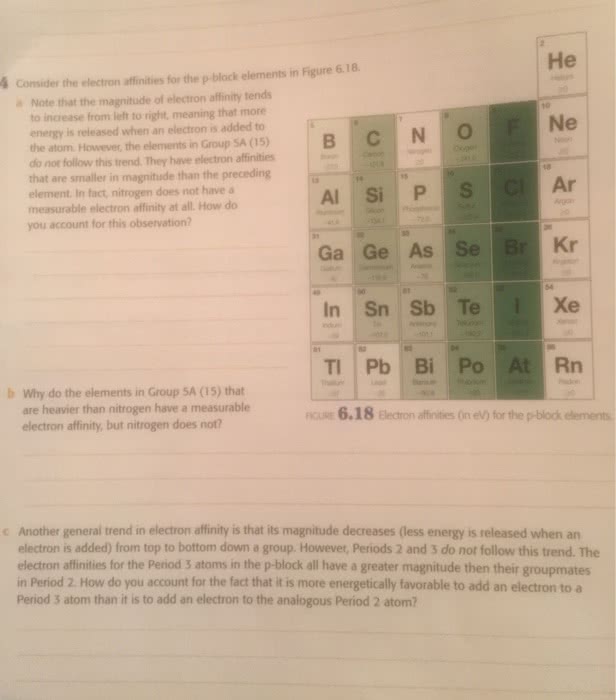CHEM1201 Lecture Notes - Lecture 8: Nonmetal, Electron Configuration, Valence Electron

Ionisation energy and electron affinity
Ionisation – removing an electron
Affinity – adding an electron
Ionisation energy of an atom:
- The minimum energy required to remove an electron from the atom in the gaseous
state
- Na(g) + ionisation energy → Na+(g) + e-
- Decreases down a group
- Increases across a group
Electron affinity:
- Measure of the energy released when an electron is added to a gaseous atom
- X(g) + e- → X- + energy
- Decreases going down a group
- Generally increases across a period
NEXT PAGE: chemical bonds
find more resources at oneclass.com
find more resources at oneclass.com
Document Summary
The minimum energy required to remove an electron from the atom in the gaseous state. Measure of the energy released when an electron is added to a gaseous atom. X(g) + e- x- + energy. Ionic bonds: electrostatic interactions between ions of opposite charge, metal cations, non-metal anions. Cocalent bonds: sharing of electrons between two atoms, non-metals, polar/non-polar (depending on electron distribution) Oxygen electronic configuration is 1s22s22p4 6 valence electrons. Atoms bond because bonding results in a more stable electron configuration: more stable = lower potential energy. Atoms bond together by either transferring or sharing electrons. Usually, this results in all atoms obtaining an outer shell with eight electrons: octet rule, there are some exceptions to this rule: helium. The lewis structure of helium contains two paired dots (a duet) For helium and hydrogen, a duet represents a stable electron configuration.



